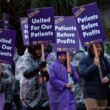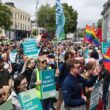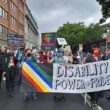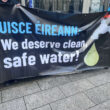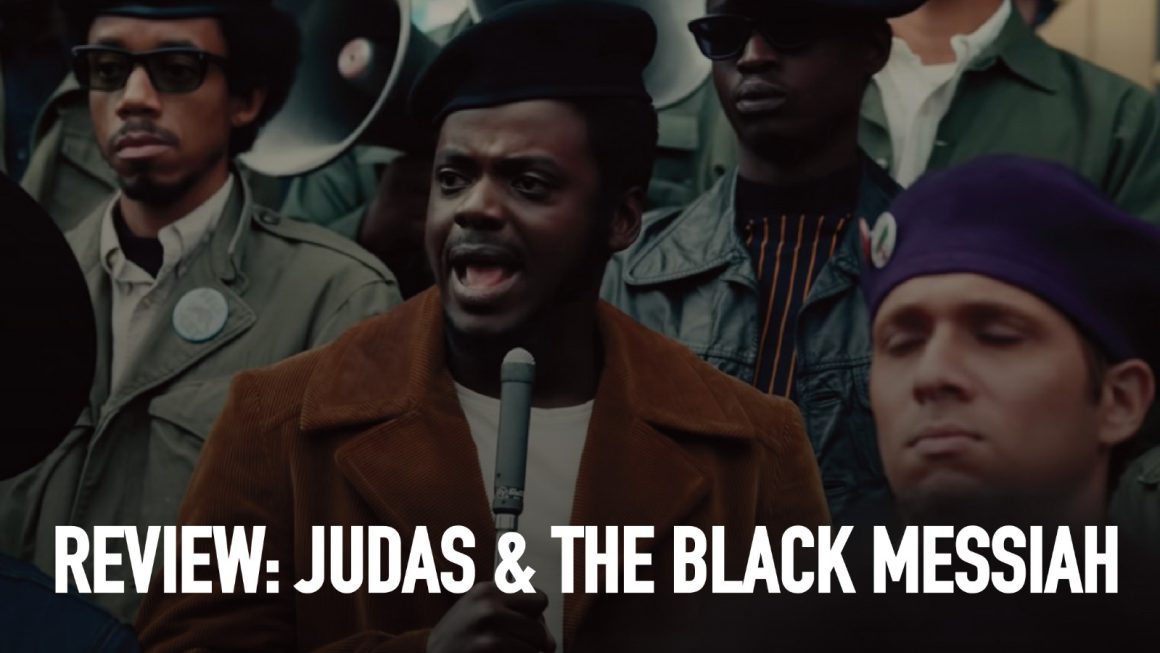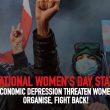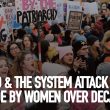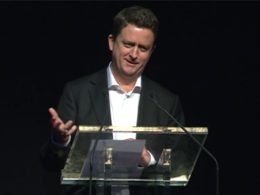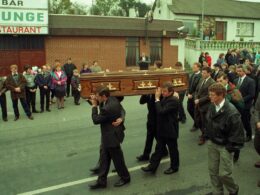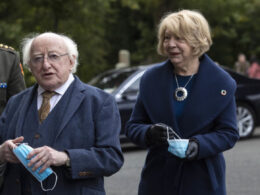“During the lifetime of great revolutionaries, the oppressing classes constantly hounded them, received their theories with the most savage malice, the most furious hatred, and the most unscrupulous campaigns of lies and slander. After their deaths, attempts are made to convert them into harmless icons, to canonize them…” – Lenin, State and Revolution
Two years ago, we commemorated the 50th anniversary of the assassination of the Illinois chapter deputy chairman of the Black Panther Party (BPP), Fred Hampton, and Peoria, Illinois chapter member Mark Clark by the director of the Federal Bureau of Investigations (F.B.I.) J. Edgar Hoover, Chicago Police, and the Chicago F.B.I. office’s Racial Matters Squad.
This Black History Month, Shaka King’s Judas and the Black Messiah was released on HBO Max. The film has allowed a new generation of organizers, activists, and every day working people and youth born out of Black Lives Matter and the George Floyd rebellion to discover this vital history of the radical Black Freedom movement, and capitalism and institutional racism’s response.
The violent and destructive response by the forces of the state to the BPP, and the targeting of Hampton for his role in forging a united working-class and youth movement is re-told in Judas and the Black Messiah. It traces the formation of the multi-racial Rainbow coalition that would stand against war, poverty, law enforcement terror, and racism – spearheaded under the leadership of Fred Hampton and the Chicago. In this moment of capitalist crisis, with a burgeoning new anti-capitalist and socialist consciousness, in which Black lives continue to be disposable, and with a crisis of revolutionary organization and leadership, what lessons do we learn from this Hollywood production about the life and legacy of Fred Hampton, Mark Clark, and BPP today?
The making of Judas and The Black Messiah
Firstly, credit should be bestowed upon the tireless work and sacrifice of Fred Hampton’s wife, Akua Njera, formerly Deborah Johnson, and their son, Fred Hampton Jr. Akua Njera is one of the seven survivors of the law enforcement assault on December 4, 1969. The two of them served as creative consultants on the film.
They have kept Fred Hampton’s legacy alive by saving the Hampton’s home to be used as a museum and educational center, and Fred Hampton Jr. has continued on to serve as chairman of the Black Panther Party Cubs.
The idea for making the film had existed for several years before Warner Bros. picked it up. It was produced by the acclaimed director Ryan Coogler of Fruitvale Station and MCU/Disney’s Black Panther. The screenplay was written by Shaka King and Will Berson, with the story developed by King, Berson, and comedy team twin brothers Kenny and Keith Lucas.
The Lucas Brothers’ original conception, presented to Shaka King, was a Black version of legendary filmmaker Martin Scorsese’s 2006 film, The Departed, starring Leonardo DiCaprio. The Departed is centered around an undercover cop’s infiltration of the mob in Boston, Massachusetts, and winning the crime boss’s trust.
The Lucas Brothers’ conception is problematic, because it renders the political work and lives of Fred Hampton, Mark Clark and BPP members as a classic Hollywood crime story that can depoliticize and decontextualize the real-life struggle against racism and capitalism.
The film is told largely from the point of view of William O’Neal (played by LaKeith Stanfield), 17-year-old car thief and impersonator of an F.B.I. agent, who is busted immediately after stealing a car in one of the movie’s early scenes. Stanfield, who is 12 years older than the character he plays, attempts to convey a troubled, confused, and rudderless young black man seeking economic stability, power, belonging, and a sense of self.
Upon his arrest, he is told that if charged, he would serve a few years in prison. O’Neal is then approached by Chicago F.B.I. special agent Roy Martin Mitchell (played by Jesse Plemons) who asks O’Neal several questions about Malcolm X and Dr.King to see his thoughts on the struggle against racism. Mitchell offers O’Neal an opportunity to save himself from prosecution if he joins the Chicago BPP and gets close to Chairman Fred Hampton.
O’Neal comes to see Mitchell as a mentor, though Mitchell uses increasingly cruel psychological manipulation, threats of arrest, and threats of outing him as an informant to the BPP to squeeze information out of the teen. Viewers see up-close the emotional turmoil that O’Neal faces as he realizes the racist, heinous plans of the F.B.I. to target and assassinate BPP members, but is dragged along and eventually manipulated into drawing the floor plans to Hampton’s apartment for his eventual assassination. At the end of the film, a note informs viewers that O’Neal took his own life years later.
There is an attempt to humanize F.B.I. agent Mitchell when he re-tells his investigative role in the murder of civil rights workers James Chaney, Andrew Goodman, and Michael Schwerner in Mississippi in 1964. As a point of the historical record, at the time of events, the F.B.I. did nothing to bring the murders of Chaney, Goodman, and Schwerner to justice.
The life and political work of Fred Hampton
The film provides a snapshot of the life and political work of Fred Hampton. It begins with Dr.King’s assassination on April 4, 1968, and the subsequent rebellion that erupted around the nation.
We don’t learn anything about Hampton’s early years, which greatly informed his political development. Fred Hampton was born on August 30, 1948; his family was one of the thousands of black working-class and poor people who migrated from the south, specifically Louisiana, after WWII. Black workers and families traveled up to the urban manufacturing and textile centers in the north, Midwest, and West Coast to escape Jim/Jane Crow poverty, violence, and endemic racism.
Fred Hampton grew up in Maywood, a suburb of Chicago. Both of his parents worked for the Argo Starch company, so he had a stable working-class lifestyle. He became a star athlete and student leader, leading marches and walk-outs against racism in high school, organizing for community centers in poor black neighborhoods in and around Chicago, and feeding young people with a food program. Hampton joined the National Association for the Advancement of Colored People (NAACP) and wanted to study law to more effectively challenge the impunity of law enforcement’s power. He then began to draw more revolutionary conclusions. He was part of a generation that was intensely radicalized by Mao’s Chinese Revolution of 1949, the Cuban Revolution of 1959, the urban guerilla warfare struggle in Algeria against French colonialism, the Vietnam War, the anti-colonial struggle, and the radical Black Freedom Movement through figures like Malcolm X. He joined the BPP for its revolutionary politics and program when he was 20 years old.
Daniel Kaluuya’s performance as Chairman Fred Hampton is stunning for capturing the essence of Hampton’s cadence, oratorical skills, mannerisms, stance, and walk. His performance will certainly garner award nominations in the coming months.
As brilliant as Kaluuya was, writer Angelica Jade Bastien of Vulture raises an interesting point about the age of the actors portraying these figures. Kaluuya at age 31 plays Hampton at age 21, and Stanfield at 27 plays 17-year-old William O’Neal. Bastien states, “…How much more impactful could the film be if the actors were closer to the ages of the men they’re playing, allowing the utter tragedy of this dynamic to shine through?”
The average age of a BPP member was 17 to 21 years old. Choosing younger actors to portray these historical figures would have highlighted the innocence, courage, youthful idealism, and danger of facing an empire head-on. There were several tender moments between Hampton and his partner Deborah Johnson (Dominique Fishback) that were beautifully acted. In another heartbreaking scene between Hampton and slain BPP member Jake Winter’s mother, she asks Fred to make sure her son is remembered more for his full life and not just as some “cop killer” who died in a shootout with police. These tender scenes punctuate the precarity, outright fear of death, and loss of black people in the struggle against this racist capitalist system.
The film barely deals with the role of women in the BPP, outside of fictional character Judy Harmon (Dominique Thorne) and Hampton’s fiancé and mother of his child Deborah Johnson. Fred Hampton was exceptional in his consideration of the fight against sexism, and the importance of developing and involving women in the struggle for liberation. The BPP rank-and-file membership was 70% women. Once again, Hollywood’s treacherous patriarchal storytelling is on full display.
Where is the Rainbow Coalition, Socialism, and COINTELPRO?
“The State targeted the Panthers because we were socialists, not because we were armed.”– Eddie Conway, a former Baltimore Black Panther Party chapter member, who served 44 years in prison as a political prisoner, Reality Asserts Itself, 4/12/14.
The film’s glaring blindspots are the short vignettes of the original radical Rainbow Coalition’s birth and attempt to build alliances with street gangs like the Blackstone Rangers. The word socialism is uttered once in the first few minutes of the film. Viewers don’t get the full breadth of the political analysis and program of the BPP that Chairman Fred Hampton brilliantly transmits in plain language in archival footage of the time.
Also quite disturbing is that the infamous Chicago Democratic mayor Richard Daley (1955-1976) is mentioned only once, and Cook County State’s Attorney Edward V. Hanrahan is never mentioned at all. Daley and the Chicago political and economic establishment governed under an extremely segregated and racist city, with a law-and-order iron fist on full display at the Democratic Party National Convention in 1968. The blood of protesters flooded the streets of Chicago from Daley’s law enforcement. These conditions led to the development of the Rainbow coalition. Hampton and the Chicago BPP sought to build a coalition of the poor and oppressed to challenge the Daley machine, and the political and economic system. The Rainbow coalition consisted of the BPP, and the Puerto Rican street gang turned political organization, the Young Lords, under the leadership of Jose Cha Cha Jimenez of Lincoln Park. The BPP also began political work with the Young Patriots of Uptown, made up of poor, white southerners. In the film, Hampton’s speech at a Young Patriot meeting points to their shared conditions of poverty, and interests in fighting an unfair economic and political system, a powerful approach in cutting across the white southerners’ racism. The role of BPP member Bob Lee is never developed in the film. Bob Lee led the Chicago BPP-Young Patriots’ discussions and is chronicled in the extraordinary documentary American Revolution 2.
This radical Rainbow coalition denounced law enforcement terror, poverty, racism, and the Vietnam War. The development of cohered leadership and organization became a domestic and international threat.
This threat was responded to through the U.S. government’s Counter Intelligence Program (COINTELPRO), which included a series of illegal projects to prevent the development of a unified radical movement and leadership, targeting feminist organizations, the anti-Vietnam war movement, and of course the civil rights and Black Power movements.
The rise of COINTELPRO wasn’t the brainchild of F.B.I director J. Edgar Hoover (Martin Sheen) solely, but the capitalist state’s response to the revolutionary 1960s. J. Edgar Hoover is portrayed as a mad-man and racist in the film, which he was. But COINTELPRO was an integral element of capitalism and institutional racism to defend the ruling elite’s interests by any means necessary.
COINTELPRO was a continuation of the Palmer raids of the early 1900s against the communists, anarchists, and black nationalists. Hoover was in fact a young agent during the Palmer raids. The Joe McCarthy red scare witch-hunts of the late 40s and early 50s were used to neutralize social movements and struggle by the working class, poor, and oppressed. COINTELPRO was ramped up after the Presidential election victory of Richard Nixon in 1968. He emphasized law and order to confront the “menace” of political radicalization and youth culture as he portrayed himself as a defender of the hopes and dreams of the silent majority.
In a new article based on newly released government documents, radical lawyers and founding members of the People’s Law Office, Flint Taylor and Jeff Hass, point to a broader plot to murder Fred Hampton by the J. Edgar Hoover’s F.B.I, Chicago police and political establishment.
Winter in America
The release of Judas and The Black Messiah occurs at a critical stage of American and global capitalism. Next month will mark the first anniversary of the rise of the worldwide pandemic, COVID-19. The global economy is on fragile ground as millions of working people, poor and oppressed in the United States face unemployment, a housing crisis, lack of healthcare, and more profound racial oppression.
Even though Trump exiting the White House is a significant development, the threat of the far-right, and right-wing white nationalism, remains a clear and present danger, as the siege on the Capitol on January 6 demonstrates. Biden has sought to reset the agenda of U.S. capitalism and its institutions after four years of the Trump presidency.
This May will mark the one-year anniversary of the George Floyd rebellion, the largest protest movement in U.S. history. We have witnessed the ebb of the historical movement, which was in part co-opted by Wall Street thanks to their two billion dollar donations to BLM-affiliated organizations and racial justice NGOs, as well as the Black misleadership class’ dastardly role in directing the justified rage into the safe channels of the two-party system and Black capitalism. This effort was led by members of the Congressional Black Caucus, like Black South Carolina congressman James Clyrburn, who outright attacked demands like defunding the police. The Democratic Party used performative rhetoric and acts to stifle the movement, like the Minneapolis Democrat-dominated City Council’s initial proposal to ‘abolish the police’ – and later their betrayal of that demand. Black Lives Matter activists have been under constant attack since Trump’s Justice Department designated “Black Identity Extremists” an emerging domestic terror threat.
The vicious attacks against BLM are in the capitalist states’ tradition of responding to cries for freedom and justice. From Occupy Wall Street and Standing Rock to Ferguson, Baltimore, and now Minneapolis, activists and organizers have been targeted with arrests, convictions, and murder while killer cops walk free.
Hampton understood that racism is fundamental to capitalism, so to root it out would require a political and economic revolution. He also understood this could only be done through the power of the people, getting actively organized and involved in their communities to take on the system. Fred Hampton’s greatest contribution was his vision of organizing a united movement that not only centered black youth but would center our movement around shared interest and common struggle of oppressed people. It was a powerful reminder of the socialist, communist and workers’ movement of the 1930s and 40s that forged unity among the working class to combat racism, corporate greed and capitalist oppression at home and abroad.
The radical Rainbow coalition and its short lived experiment cemented Hampton’s understanding that the greatest fear of capitalism and racism is working people and youth coming together in unity to challenge the system. The George Floyd rebellion in its early phase provided us a glimpse of a multi-racial revolt against racial oppression and law enforcement terror that shook the world and would make Fred Hampton smile.
Our movement today must follow in this legacy to develop and cohere around a revolutionary analysis, program, and approach that raises consciousness and sustains daily activity around things that matter to us.
What Fred Hampton Taught Us
“I hope people actually go study fred hampton’s analysis on u.s. imperialism and fascism beyond just seeing a movie, most of his politics were stripped from that film.” –Noname, Chicago native, Hip-Hop artist, Twitter post 2/9/21
Fred Hampton’s political work and ultimate legacy are rooted in building a multi-racial working class and poor people’s movement with daily organizing and mobilizing to end the tyranny of capitalist oppression and exploitation. He was fighting for a socialist transformation of society that would facilitate us living a dignified life. Fred Hampton’s self-sacrifice, revolutionary love for the people, and belief in the power of the people is what has inspired millions of young people around the world to speak out and organize around housing, jobs, education, and ending law enforcement terror, imperial war, and systemic racism.
New Jersey Senator Corey Booker attempted to truncate and whitewash Chairman Fred Hampton’s revolutionary words in a Twitter post on February 5 for Black History Month.
It is only right to conclude with the full words of Chairman Fred Hampton.
“We don’t think you fight fire with fire best; we think you fight fire with water best. We’re going to fight racism, not with racism, but we’re going to fight with solidarity. We say we’re not going to fight capitalism with black capitalism, but we’re going to fight it with socialism. We’re stood up and said we’re not going to fight reactionary pigs and reactionary state’s attorneys like this and reactionary state’s attorneys like Hanrahan with any other reactions on our part. We’re going to fight their reactions with all of us people getting together and having an international proletarian revolution.”

